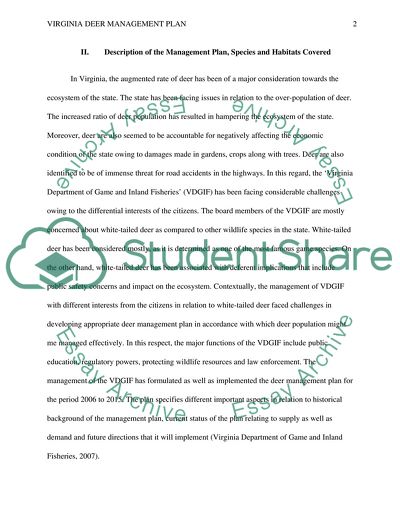Cite this document
(“Virginia Deer Management Plan Essay Example | Topics and Well Written Essays - 2500 words”, n.d.)
Retrieved from https://studentshare.org/environmental-studies/1638909-virginia-deer-management-plan
Retrieved from https://studentshare.org/environmental-studies/1638909-virginia-deer-management-plan
(Virginia Deer Management Plan Essay Example | Topics and Well Written Essays - 2500 Words)
https://studentshare.org/environmental-studies/1638909-virginia-deer-management-plan.
https://studentshare.org/environmental-studies/1638909-virginia-deer-management-plan.
“Virginia Deer Management Plan Essay Example | Topics and Well Written Essays - 2500 Words”, n.d. https://studentshare.org/environmental-studies/1638909-virginia-deer-management-plan.


